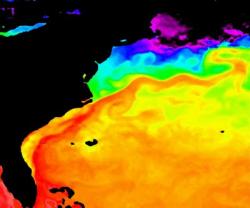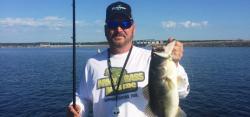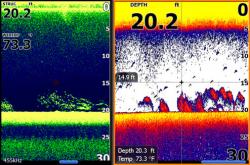What Young Fishermen Should Do To Become A Pro
Professional Bass Fishermen Give Advice To Young Fishermen
Almost all young bass fishermen dream of becoming a professional bass fisherman in the future. A very few will. The idea of fishing every day, winning tournaments and being admired by other fishermen is enticing. But it is a hard life, and you must work, even in high school and college, to make your dream come true.
Fishing almost every day in tournaments and practicing for them sounds great. But it means long, hard days on the water no matter what the weather. And most don’t think about the travel to lakes all over the US with long drives, little sleep and being away from family and friends all during the tournament season.
Even in the off season a successful pro will spend many hours away from home while working shows. Presenting your sponsor’s products at boat shows, fishing shows and other events is critical for success, but it means even more travel.
You can be good at catching bass but there is a lot more that goes into a pro career. If you can’t get and keep sponsors you can not stay on the tournament trail. And those sponsors need people that can represent them well to the public, not someone that can just catch fish.
So how should a high school or college fisherman prepare for a professional fishing career? Some things may seem simple and straight forward. But others may not be so apparent. Who better to know and explain the things that you need to do than the guys fishing the Bass Masters Classic? As the BASS motto goes, they are living the dream.
At the 2014 Classic at Lake Guntersville and Birmingham I got to interview some of the pros fishing it. These pros ranged from first timers fishing the Classic to some who had fished more than a dozen Classics.
I asked them what a young fisherman needed to do to plan for a professional career. Their answers will give you good guidance in your planning to make your dreams come true.
Greg Vinson
Greg Vinson was fishing his third Classic at Guntersville after placing second in the 2012 Classic. I spent the practice day in the boat with Greg and he gave me detailed answers to my questions.
“Stay in school,” Greg said. “No matter what happens in your fishing career, a good education is important for the rest of your life,” he added. If your fishing career works out your education will help you. But if it something keeps you from being a professional bass fisherman, a college degree is very important.
Greg also said a young fisherman should fish every chance he or she gets. Join a youth club and fish those tournaments. Join a regular club as soon as allowed and fish them with more experienced fishermen and learn from them.
“Many young fishermen get too excited and don’t pay attention to detail,” Greg said. Learn to pay attention to detail. Make sure all your hooks are sharp and your reels are in good shape.
Also learn to pay attention to detail when on the water. Greg is good at this. He notices every bird diving, every circle of feeding fish and every change in wind direction.
All those are obvious but he also looks for little details like the size of the baitfish the bass are eating. One shad floating in the water can tell you what size bait to use. If a fish you catch spits up a crawfish, use baits that imitate them.
“Get the basics down,” Greg said. Learn to fish patterns, not places, and apply them to every lake you fish. Work on baits you don’t have confidence in until you do. Remember where you get bites, and learn from every one.
“Electronics are critical in fishing now,” Greg said. Learn to use them and what they mean. Work on all your techniques and get the mechanics of pitching, flipping and casting down so well you don’t even have to think about them, even if you are practicing in your back yard.
Patrick Bone
Patrick Bone was the only Georgia fisherman at the 2014 Classic. He qualified by winning a Southern Open but has done well on both the FLW tournament trail as well as BASS trail tournaments.
“Decide where you want to go,” Patrick said. Do you want to fish the top trails and travel all the time, or would you rather learn you home lake in detail and concentrate on tournaments on it. It is much easier to learn one lake and stay near home that to constantly travel all over the US fishing tournaments on new lakes.
“Remember you are starting at the bottom,” Patrick added. Don’t expect to hit the pro trail and instantly win, or to do well in every tournament. Don’t let bad tournaments hurt your confidence.
“Support at home is critical,” Patrick said. For a high school or college fisherman, support from parents and mentors can make all the difference. If married, lack of support from your wife will mean either the end of your career or the end of your marriage.
“Fish with clubs, youth teams and enter draw tournaments as a co-angler,” Patrick said. Learn from every day on the water. Try to find a mentor, an experienced fisherman to teach you as you fish. There are a lot of good people out there that can make your learning curve much steeper.
David Kilgore
David Kilgore lives in Jasper, Alabama and was one of nine contenders from Alabama, the most of any one state. He was fishing his first Classic at Guntersville but had won over $200,000 in 50 BASS tournaments in his career. He has qualified to fish the Elite Series three times but has turned each opportunity down. He cites the expenses of fishing the trail and time away from his family and business as reasons to not fish it.
“Join a high school team or youth team in your area and try to fish every tournament,” David said. “Pick a college with a fishing team and fish all those tournaments, too,” he added. There is no substitute for time on the water to learn the habits of bass.
Fishing high school and youth tournaments are likely to put you on lakes close to home, and you can learn from them. But college teams travel well away from their local area and that will teach you to find bass on unfamiliar lakes. You have to learn bass patterns that hold up no matter where you fish.
Fish other tournaments as a co-angler, and learn from every trip. Pay attention to everything you see and every fish you catch. David says you should keep a detailed fishing log of every bass you catch to help you learn how a bass’s brain works under different conditions. Keeping a good log you can review will help you learn.
Randall Tharp
Randall Tharp was fishing his first Classic at Guntersville after winning the FLW Championship that year. He had concentrated on the FLW tournaments but decided to fish the BASS Opens to qualify for the Elite trail, and won an Open so he qualified.
“Don’t get in a hurry to fish the pro trails, get an education first,” Randall said. Randall didn’t get his first bass boat until he was 30 years old so he got a late start, concentrating on education and business first, and now he is one of the top pros on both trails.
“Be true to yourself first,” Randall added. Don’t let your fishing take over your life. But fish every day you can within reason. Enter as many tournaments as possible as a co-angler, but don’t ever get into debt from your fishing.
Learn from others you fish with, but also figure out your own way of doing things. Every lake and every day is different. If you figure out your own way of fishing after learning from others, you can go to your strength in all tournaments.
“If you have a God given ability to catch bass, that special quality that sets you apart from weekend anglers, use it in the way that suits you. Develop your own style of fishing and don’t let dock talk make you change from your strengths.
To develop this skill, learn from others by being a Marshall in tournaments, fishing as a co-angler put time in on the water. Develop your confidence, probably the most important quality of a successful pro. But don’t let your fishing interfere with your home life.
Clifford Pirch
Clifford Pirch was fishing his first Classic in 2014 after winning over $213,000 in 32 BASS trail tournaments. He is a hunting and fishing guide from Arizona and has been successful on the FLW trail, too, winning over $740,000 there.
Clifford agreed staying in school, getting a degree in public relations or marketing, and spending time on the water is the way to go. But he also said there is a tremendous amount of information out there on learning to catch bass.
“Study magazine articles, information on the net and even newspaper reports,” he said. You can learn a lot and get some good ideas from them. Then put it with your information from time on the water and put all this together for your use.
“Make a pre-tournament plan and stick with it,” he said. Too many young fishermen try to fish every thing they can and miss a good pattern by not sticking with their plan. If you have put in the time studying for a tournament don’t waste it by not following your plan.
Kevin VanDam
Arguably the top bass fisherman of this century, Kevin VanDam has fished 24 Classics and won four. He is well known to most fishermen and a great role model for young fishermen.
“Stay in school and get a marketing degree,” Kevin said. If you can’t market yourself and your sponsors you will not be able to have a pro career. Kevin is a master at both, and his advice is critical for your success.
“Fish high school, youth, club and college tournaments,” Kevin said. Learn from experienced fishermen and get the basics down. But you also must learn to budget your time and energy in a tournament, and fishing them is the only way to do that.
Skeet Reese
I got to eat lunch with Skeet Reese at the media day and he spent time talking with me even though several of his sponsors were at the table. Many of the top pros were overwhelmed with media and sponsors demanding their time, but they all had a good attitude and were willing to answer questions. That willingness is critical to a pro’s success.
“Start out with high school and college teams as well as one day tournaments,” Skeet said. Don’t try to go too fast. Work your way up through Opens with the goal of qualifying for the Elite trail. Learn in every tournament as you go.
“Find a good partner to marry,” Skeet said. Support at home is critical for you to be successful. A good marriage will help you on the tournament trail. If you have problems at home, you will have problems in tournaments.
Aaron Martens
Aaron Martens lives in Leeds Alabama and was fishing his 15th Classic. He moved to Alabama to be closer to the bigger tournament trails and for the variety and quality of waters to fish in Alabama.
“Fish, fish, fish,” said Aaron. Fish a lot to get productive at it. But he warns if you don’t love to fish and fish competitively, you won’t do well. If it is a job rather than a pleasure you will have a tough time. It has to be in your blood.
Hank Cherry
Hank Cherry was fishing his second Classic at Guntersville and has won over $275,000 in 30 BASS tournaments. He placed third in his first Classic on Grand Lake in 2013 and has done well in FLW tournaments, too.
“Put fishing the pro trails out of your mind until you get a college degree,” Hank said. Your degree in marketing or PR should be your priority. Fish youth clubs, high school teams and college teams, but get your education then concentrate on your pro fishing career.
Edwin Evers
Edwin Evers has won over 2.2 million dollars in his career and is one of the most popular fisherman on the trails. He placed third at Guntersville in the 2014 Classic, his 13 trip to them.
“Stay in school, get a degree in marketing and fish a lot,” Edwin said. Fishing high school, youth and college teams is a great help, but don’t overlook other possibilities. You can learn a lot by being a marshal at tournaments, too.
“Learn from everyone and everything, but develop your own style,” Edwin said. Don’t try to get information about a lake that can mislead you. Consider anything you hear, but get on the water and confirm it but don’t get locked into something others have told you. Time on the water is the only way to learn this.
Jordan Lee
What better fisherman at the Classic for advice for young fishermen than Jordan Lee. He fished at Guntersvile as the college trail representative and placed sixth in his first Classic. Just 23 years old, he is the youngest Elite Series fisherman this year.
Jordan got hooked on bass fishing when he was ten and knew, after catching his first bass in his grandfather’s pond, that he wanted to be a pro fisherman. He went to Auburn University and fished the college team there and has done well in other tournaments, too.
“Fish a lot as a co-angler, make friends with the pro fisherman and learn from them,” Jordan said. That is the way to learn patterns and techniques to catch bass. Fish a variety of lakes so you can be adaptable.
“Learn to use electronics,” Jordan said. They are critical for catching fish in tournaments now. You have to get all the basics down, but electronics will show you the structure and cover to fish, and even the fish in it.
The obvious things a young fisherman should do, according to these pros, is to fish a lot, learn the basics and get a degree.
Less obvious is the consistent recommendation to get a degree in marketing or PR so you can market yourself and represent your sponsors. It might seem a degree in fisheries biology would help more, but you can learn the basics of catching bass on the water while getting and keeping sponsors so you can keep fishing.
Make your plans and start working toward the dream of being a pro fisherman now.






